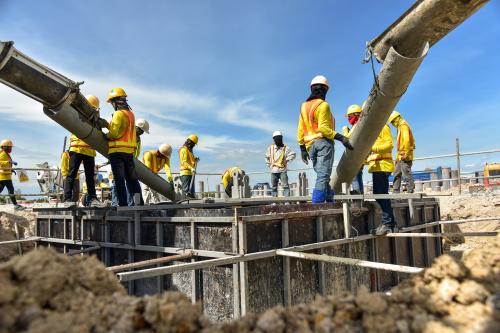Air travel has changed tremendously since the days when passengers embarked in business attire to today’s more casual “Greyhound bus in the sky” experience.
It’s also transformed our lives, revolutionizing how we do business, what food is available at our grocery store and even where we choose to vacation. And it continues to do so as our global relationships grow in importance.
Over the last 20 years international passenger traffic in and out of the United States has more than doubled, reaching 163 million passengers in 2011. That growth rate was twice as fast as domestic travel, and similarly outpaced the growth in real GDP. At a time of economic upheaval, international aviation is a net positive for the domestic economy.
Driving that growth are the country’s major international relationships. Corridors like New York-London, Los Angeles-Seoul, and Miami-Caracas dominate the travel in and out of the country — reinforcing how the physical ties between major metropolitan aviation centers matter.
Our aviation system relies on these physical links to make the entire network go.
Domestically, since most places maintain limited international connections, gateways like New York and Seattle move an eye-popping 97 percent of all international transfer-passengers. This means metro areas like Omaha and Wichita, each with growing international passenger levels, rely exclusively on gateways to reach their global peers. And these gateways are not just connection points — they alone captured 73 percent of all international passengers starting or ending their trip in the United States.
Internationally, aviation data prove the growing influence of emerging markets. Between 2003 and 2011, travel between the United States and Brazil, Russia, India, and China — the so-called BRIC countries — jumped over 110 percent. Undergirding these national statistics is the growing connectivity between our markets and places like Sao Paulo, Moscow, Hyderabad, and Shanghai.
But while the influence of international aviation increases, federal policy has failed to keep up. Instead, when it comes to American commercial aviation, key hubs must battle outdated capital policies and outmoded regulations.
While most places in America have a commercial airport, the largest metropolitan areas move the vast majority of international passengers. In 2011, the 100 largest metro areas were responsible for 96 percent of the country’s international passengers.
However, federal policies and regulations stack the deck against these vital aviation centers.
Capital programs consistently deemphasize the critical role of the largest metropolitan aviation centers. The Airport Improvement Program, which outlays direct grants via passenger taxes, sends less than 40 percent of funding to those same metros generating over 90 percent of all passengers. Federal policy does allow airports to levy their own passenger tax, known as a Passenger Facility Charge, but it also caps the fee at $4.50. Federal regulations even hurt airports ability to borrow, classifying certain bonds as non-exempt from the Alternative Minimum Tax. As a consequence, the price of debt goes up.
Meanwhile, federal regulations restrict competition and complicate travel in and out of the country. Even with major deregulation in 1978, the United States still prohibits international airlines from operating domestic routes. With domestic airlines consolidating routes and leaving many communities with fewer direct flights, does it make sense to restrict carrier options for these communities?
A similar question should be asked of the many international tourists looking to visit. Why does it take so long to get a tourist visa for citizens in Brazil, India and other allies, especially considering they want to spend money on our shores?
Federal policy can do better. We can no longer deemphasize investment in our country’s busiest metro areas, especially when those same places make travel possible for all other communities. We need to recalibrate our tourist visa system and facilitate travel between our emerging friends. And we need to actively consider if protectionist policies may hurt consumers in trying to shield domestic airlines.
Aviation is no longer a luxury. Rather, it is crucial to American business and the economy. It’s time we reform our aviation policies to reflect these global realities.



Commentary
Op-edFederal Aviation Policy Must be Reformed, Updated
October 30, 2012